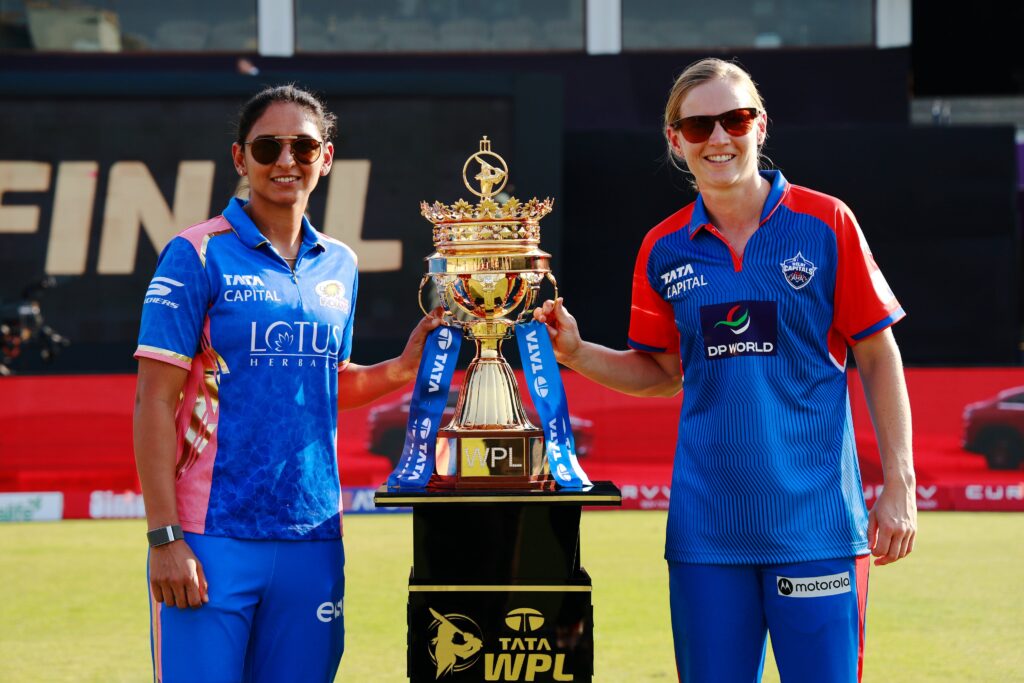With the Tata Women’s Premier League (WPL) 2025 final on the horizon, there has been a quiet but decisive triumph already, one for the world. In addition to nail-biting matches and mind-blowing performances, WPL has effortlessly woven sustainability into the game’s very fabric, showing that cricket is not only a sport, it is a force for good.
Bowling for Trees: Dot Balls Becoming Forests
Not every dot ball in WPL 2025 is a pressure moment for the batter, it’s a victory for the planet. Under an agreement with the BCCI, WPL has committed to planting 50 trees for every dot ball bowled. The easy yet effective program has planted an impressive 94,550 trees this season and counting, transforming defensive cricket strategies into eco-warrior actions.
Envision a stadium full of thousands of people, now envision an even larger stadium, but not one constructed of concrete and floodlights, but of great trees giving sustenance to the soil. That is WPL’s scope of dedication.
In context, 147,000 trees planted during 2023 IPL playoffs through 294 dot balls is considerable. For WPL 2025 extending into a complete season, the radius is on a geometric progression. Blinking green tree motifs in scorecards through TV broadcasting helps remind audience that each dot ball delivery failing to yield a run goes into helping create a greener future.
Shattering The Dot Ball Revolution: Shabnim Ismail’s Impact
Mumbai Indians‘ Shabnim Ismail bowling during the 2025 Women’s Premier League (WPL) topped the league with 115 dot balls from nine matches. Delhi Capitals’ Shikha Pandey and Gujarat Giants’ Kashvee Gautam bowled 94 dot balls each, reflecting their invaluable contribution to their team bowling.
This phenomenal bowling display arrives with the league’s green movement, whereby any dot ball bowled is directed towards tree planting. Ismail’s 115 dot balls, 94 apiece by Pandey and Gautam, not only flaunt their superior ability but also labor actively in taking the league’s stance towards going green. Their combined act is a class lesson in how sporting prowess can contribute towards environmental control in perfect harmony.
Cricket vs. Climate Change: The Carbon Connection
The WPL’s tree-planting initiative, inspired by the IPL model, has led to the planting of 94,550 trees. Each mature tree is estimated to absorb approximately 22 kg of CO₂ annually. This results in:
- Annual CO₂ Absorption: 94,550 trees × 22 kg/tree = 2,078,100 kg (2,078.1 metric tons) of CO₂ per year.
- Lifetime CO₂ Absorption (40 years): 94,550 trees × 1,000 kg/tree = 94,550 metric tons of CO₂ over 40 years.
To contextualize these figures:
- Equivalent to Removing Cars from the Road: Assuming an average passenger car emits approximately 144 grams of CO₂ per kilometer (cdn.catf.us )and travels an average of 12,000 kilometers annually, each car emits about 1,728 kg (1.728 metric tons) of CO₂ per year. Therefore, the annual CO₂ absorption of the 94,550 trees (2,078.1 metric tons) is roughly equivalent to removing approximately 1,201 cars from the road for a year.
- Offsetting Flight Emissions: A round-trip flight between Delhi and Mumbai emits approximately 463.6 kg of CO₂ per passenger (curb6.com) The annual CO₂ absorption of the 94,550 trees can offset the emissions from approximately 4,484 such round-trip flights.
Beyond carbon sequestration, this initiative also contributes to:
- Reducing Urban Heat Islands: By providing shade and releasing moisture, trees can lower urban temperatures, combating heat islands.
- Improving Biodiversity: Trees support various species, enhancing ecosystem health.
This program exemplifies how integrating sustainability into sports can lead to tangible environmental benefits, actively contributing to climate change mitigation.
The Missing Piece: Can WPL Go Carbon Neutral?
While WPL has scored a six for its effort in planting trees, its efforts at carbon reduction are direct ones in the pipeline. Tata Group has ambitious sustainability goals such as becoming net-zero by 2045, but WPL activities exclusive to the brand, like cutting stadium energy consumption, minimizing team travel carbon emissions through offsetting, or hosting carbon-neutral match days, are still not in the spotlight.
With multiple arenas and global players putting carbon into the league’s footprint, the future playbook may encompass renewable energy-powered arenas, green team transport, and green initiatives driven by fans. A “carbon-neutral final” in coming seasons? Now that’s a game-changer.
More Than Just a Game: Community and Conservation
WPL’s efforts towards the environment not only serve the environment but also empower communities. The tree plantation programs involve members of the community, provide employment, and promote environmental education. Where cricket is followed with zeal, WPL has translated that zeal into action, making every dot ball count beyond the boundary.
Picture a little girl in a village planting a tree, and realizing that her favorite game is also giving something back to her future. That is what WPL is doing, dot by dot ball, tree by tree.
The Road Ahead: A Greener Pitch for Future Seasons
As WPL grows, its green aspirations can change too to create new world standards. Additional planting initiatives, incorporating green stadium practices, and implementing carbon offset tactics could put WPL on the path as the leader of green sports.
With 94,550 trees already planted in the ground and dozens more on the way, WPL’s green revolution is just beginning to emerge. As cricket fans cheer on their beloved teams, they’re also without even realizing it, advocating a greener, healthier world. Because in WPL, every dot ball isn’t merely a statistic—it’s a seed to the future.
Read Also: BCCI’s Green Pitch for Sustainable Cricket Future

